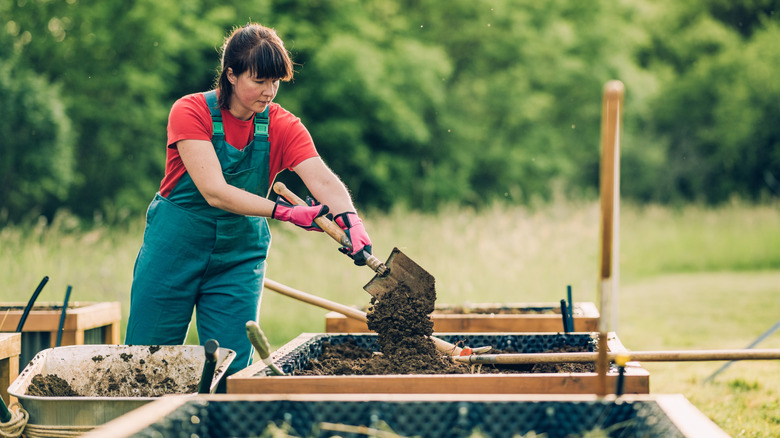Why You Might Want To Avoid Putting Gravel And Rocks In A Raised Garden Bed
Raised garden beds are a popular and practical way to garden in many places. They are great if you have limited space, or if you have particularly compacted soil. But for all their advantages, filling raised beds can sometimes be a challenge. One common misconception is that it benefits drainage to include a layer of rocks, when filling a raised garden.
Much like the myth of adding rocks or gravel to the bottom of planters to help with drainage, adding rocks to a raised bed can cause more harm than good, and should be avoided if you want your plants to thrive. You see, elevated beds, if filled with a high quality growing medium, will have a natural tendency to drain well anyway. And while raised garden beds can be made from a variety of materials, most are open at the bottom. Even those with a solid base, will either have drainage holes or a plug you can use to let excess water escape. The myth of putting gravel or rocks in the bottom of raised beds and planters comes from a practice that was popular many years ago. It was common to put broken pieces of terracotta into pots to stop the soil from clogging up the large drainage hole. The "crocks," as they were commonly known, do help the downward flow of water thanks to their irregular sizes. But this is simply not the case with stones or gravel.
Why gravel will hinder the drainage in a raised bed
When you irrigate your raised garden bed the water will naturally flow downward through the porous soil, thanks to gravity. Stones on the other hand, are far less porous, so water takes longer to seep through them, unless there are large gaps. When the water reaches the layer of rocks its flow is slowed down considerably. This actually hinders drainage, rather than assisting it. Therefore the water will pool on top of the rocks, and not drain away freely. The excess liquid can only slowly seep through once the soil is completely saturated, and can't hold any more moisture.
Ideally, you want to fill your raised garden bed with a good quality mix of topsoil and compost. This will provide the best possible growing medium and, as the beds are above ground level, adequate drainage shouldn't be a problem. Don't worry if there are a few stones or pebbles within the mix; just be sure to avoid creating a layer that will impede the water flow.

